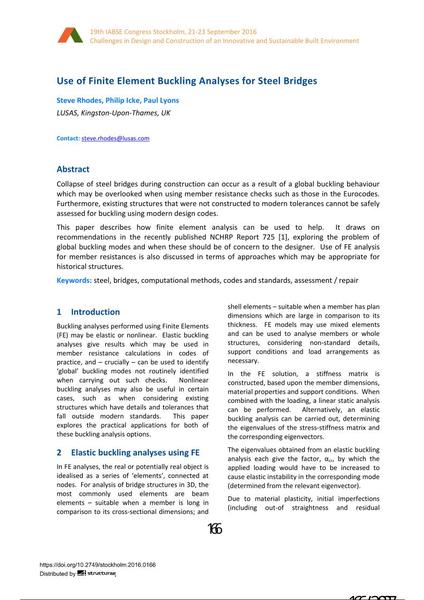Use of Finite Element Buckling Analyses for Steel Bridges

|
|
|||||||||||
Détails bibliographiques
| Auteur(s): |
Steve Rhodes
(LUSAS, Kingston-Upon-Thames, UK)
Philip Icke (LUSAS, Kingston-Upon-Thames, UK) Paul Lyons (LUSAS, Kingston-Upon-Thames, UK) |
||||
|---|---|---|---|---|---|
| Médium: | papier de conférence | ||||
| Langue(s): | anglais | ||||
| Conférence: | IABSE Congress: Challenges in Design and Construction of an Innovative and Sustainable Built Environment, Stockholm, Sweden, 21-23 September 2016 | ||||
| Publié dans: | IABSE Congress Stockholm, 2016 | ||||
|
|||||
| Page(s): | 166-172 | ||||
| Nombre total de pages (du PDF): | 7 | ||||
| Année: | 2016 | ||||
| DOI: | 10.2749/stockholm.2016.0166 | ||||
| Abstrait: |
Collapse of steel bridges during construction can occur as a result of a global buckling behaviour which may be overlooked when using member resistance checks such as those in the Eurocodes. Furthermore, existing structures that were not constructed to modern tolerances cannot be safely assessed for buckling using modern design codes. This paper describes how finite element analysis can be used to help. It draws on recommendations in the recently published NCHRP Report 725 [1], exploring the problem of global buckling modes and when these should be of concern to the designer. Use of FE analysis for member resistances is also discussed in terms of approaches which may be appropriate for historical structures. |
||||
| Mots-clé: |
acier ponts
|
||||

